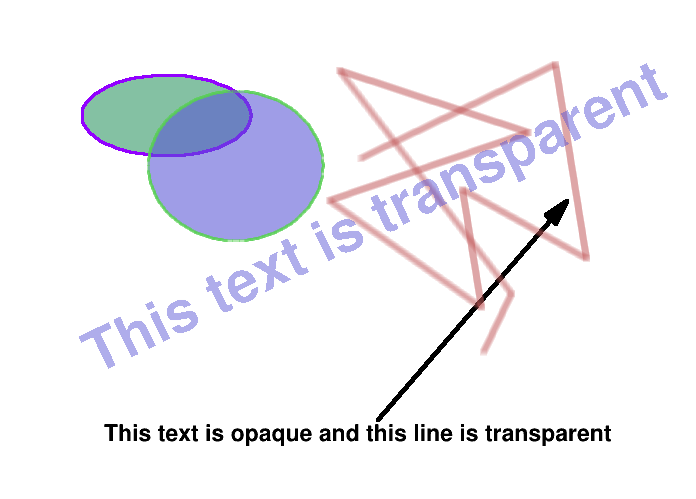 |
ROOT 6.08/07 Reference Guide |
 |
ROOT 6.08/07 Reference Guide |

 This macro demonstrates the use of color transparency.
This macro demonstrates the use of color transparency.
It is done by specifying the alpha value of a given color. For instance
changes the ellipse fill color to the index 9 with an alpha value of 0.571. 0. would be fully transparent (invisible) and 1. completely opaque (the default).
The transparency is available on all platforms when the flag OpenGL.CanvasPreferGL is set to 1 in $ROOTSYS/etc/system.rootrc, or on Mac with the Cocoa backend. X11 does not support transparency. On the file output it is visible with PDF, PNG, Gif, JPEG, SVG ... but not PostScript.

Definition in file transparency.C.